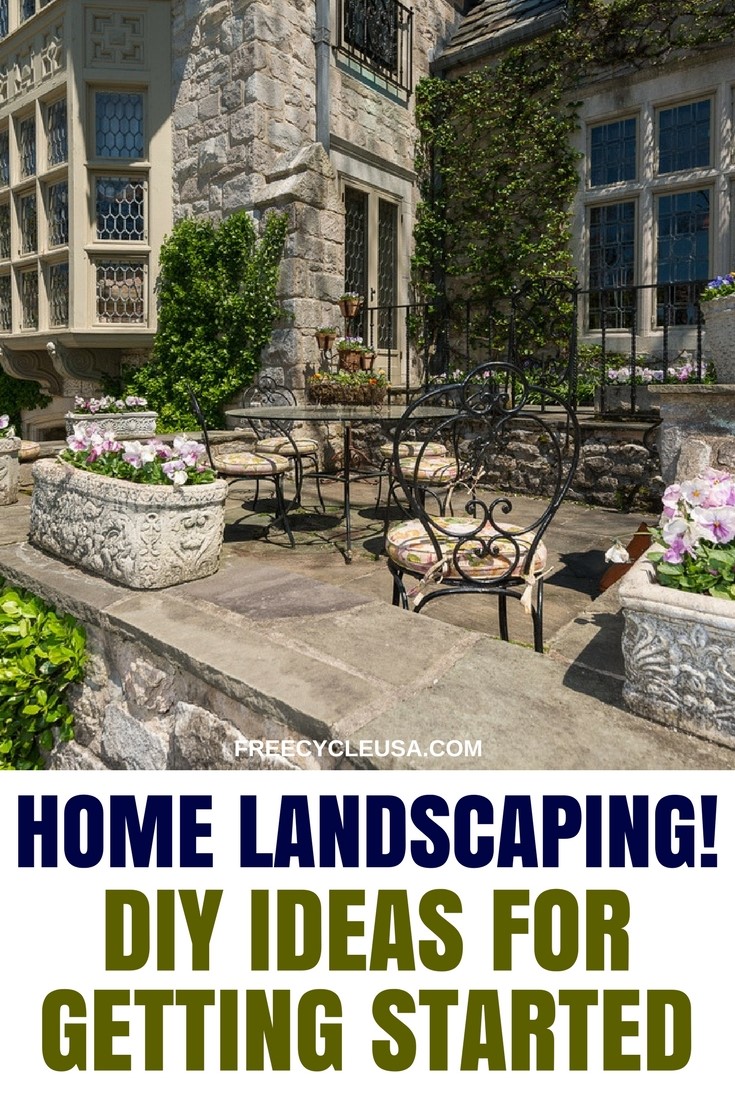Creating a beautiful landscape can add value to your home and provide a relaxing outdoor space for you and your family to enjoy. However, the process of landscaping can seem overwhelming, especially if you're a beginner. Fortunately, with some research and careful planning, you can create a stunning landscape that complements your home's architecture and suits your personal style.
Here are some tips and tricks to help you get started with your DIY landscaping project:
- Determine Your Budget
Before you begin any landscaping project, it's essential to determine your budget. Landscaping can be expensive, so you need to establish how much money you're willing to spend. Consider the size of your outdoor space and what you want to accomplish with your project. Start with a rough estimate of your expenses, including the cost of materials, tools, and labor. Be sure to leave some room for unexpected expenses that may arise during the project.
- Assess Your Outdoor Space
Once you have determined your budget, it's time to assess your outdoor space. Walk around your property and take note of any existing features, such as trees, shrubs, and flowers, that you want to keep. Identify areas that get plenty of sunlight and areas that are shaded. Consider the terrain and the slope of your property. These factors will impact the design of your landscape.
- Plan Your Design
Once you have assessed your outdoor space, it's time to plan your design. Sketch out a rough plan of what you want your landscape to look like. Consider the types of plants and flowers you want to include in your design, as well as any hardscaping elements, such as pathways, patios, or retaining walls. Think about how you want to use your outdoor space and design accordingly.

- Choose Your Plants
Selecting the right plants is crucial for a successful landscaping project. Consider the amount of sunlight your outdoor space receives and choose plants that are suitable for those conditions. Think about the height, texture, and color of the plants you want to include in your design. Consider using a mix of evergreen and deciduous plants to add year-round interest to your landscape.
- Install Hardscaping Elements
Hardscaping elements, such as pathways, patios, and retaining walls, can add structure and function to your outdoor space. Consider using materials that complement your home's architecture, such as brick, stone, or concrete. Be sure to consider the scale of your outdoor space when choosing the size and placement of hardscaping elements.
- Maintenance
Maintaining your landscaping is essential to keep it looking beautiful year-round. Be sure to water your plants regularly and prune them as needed. Remove weeds and debris from your outdoor space to keep it looking tidy. Consider hiring a professional landscaper to help with ongoing maintenance tasks.
In conclusion, with a little planning, research, and hard work, you can create a beautiful landscape that complements your home's architecture and suits your personal style. Remember to take your time, assess your outdoor space, and plan accordingly. With these tips and tricks, you'll be on your way to creating the outdoor oasis of your dreams!
This ensures that you won't miss anything that you'll live to regret. A great source of information on this can be found at lideas4landscaping.com, which is a blog that provides you with some of the best picks among the wealth of landscaping information, tips, advice, and ideas on the internet.
I hope this has inspired you to get started with your do-it-yourself landscaping project. Click here or below to see how easy it is to DIY Landscaping yourself. Good luck all!







